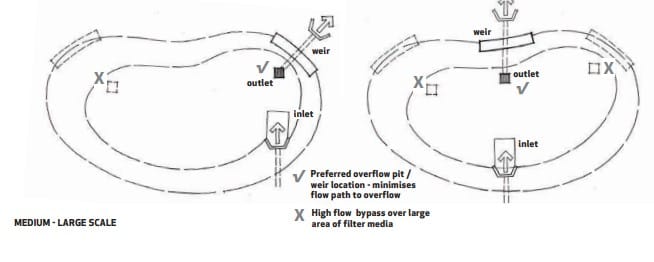Steven Reed P.E.
Civil/Environmental
I am for the first time looking at using a bioretention pond on one of my designs. I typically use proprietary systems or standard ponds for detention and treatment, but I would like to start utilizing LID's more for cost saving and potential utilization of the landscape areas. I have generated pre, post, and post-bypass hydrographs in the Autodesk Hydrographs extension, and exported them to excel to start the calculations. I would like to use the bioretention pond for both flow control and treatment, but I noticed that bioretention ponds typically only allow up to 6" of depth; presumably for the health of the plants. If this is the case, how are these ponds typically used for flow control? That's not nearly enough volume. Would it make sense to put an overflow weir at 6" above the treatment soil, and divert overflow to a separate detention pond? Are control structures ever designed with the bioretention ponds, with orifices, etc.? Also, are there any tools for designing these systems, or am I better off just continuing to build a custom spreadsheet for the design?
Thanks for any advice or thoughts!
Thanks for any advice or thoughts!

